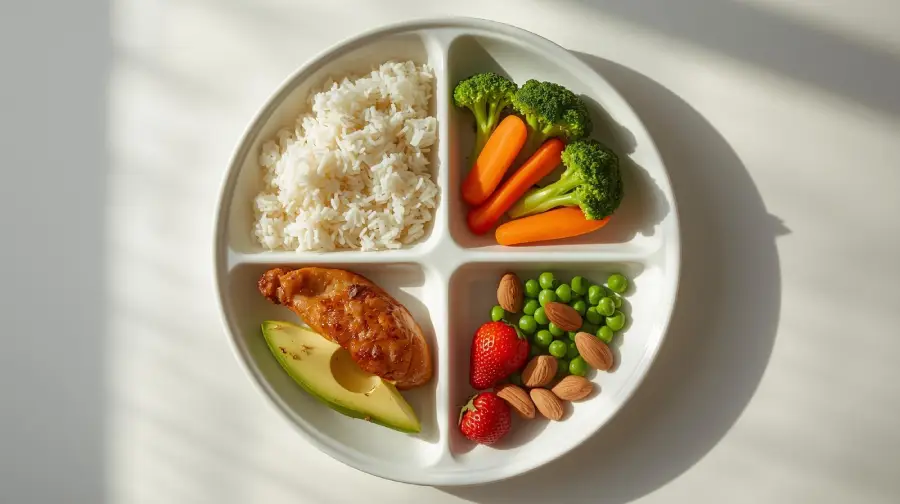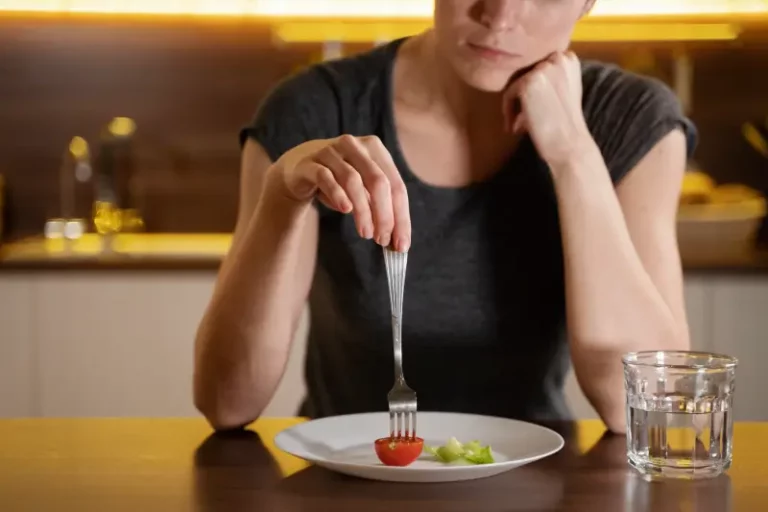3. food_categorisation
Section one: Introduction
For many of us who have suffered from compulsive overeating, food was never merely “physical nourishment.” We used food as a reward, as comfort, as a hiding place, and even as a drug to escape our inner pain. That’s why, in Overeaters Anonymous, we say that our main problem is not simply “food”, but “our unhealthy relationship with it”.
We learned that overeating, at its very core, is deeply connected to our emotions.
When we were happy, we turned to food to celebrate.
When we were sad, we ate to soothe ourselves.
When we were angry, we ate to silence the rage.
And when we were lonely, we replaced companionship with food.
Even moments of success or joy often became excuses to overeat.
Over time, we discovered that we didn’t know how to face our emotions in a healthy way. We either ran from them or drowned in them — and in both cases, we used food to numb, control, or escape our feelings. That is where our illness reveals itself: food stopped being nourishment for the body and became a means of managing the soul.
One of OA’s most important messages is this:
Freedom from compulsive overeating does not come from changing what or how much we eat — it comes from learning to live with our feelings without needing to run away or soothe them through food.
Some of us also realized that just as certain emotions push us towards food, certain foods draw us towards specific emotions. Each type of food carries emotional or sensory memories — sometimes sweet and comforting, sometimes painful and rooted in old wounds.
Through this awareness, we began to see that overeating is not merely a response to physical hunger, but often a reaction to the emotional and psychological weight that food carries within us. This is where the Twelve Steps become meaningful: we learn to uncover these hidden connections and face their emotional roots rather than trying to eat them away.
This is what makes OA different from any ordinary diet program: We do not simply change the food — we heal our relationship with food and with our emotions.
Section Two: Emotions and Their Role in Overeating
Compulsive overeating is less about physical hunger and more about emotional and psychological hunger.
Many of us have experienced that at certain times we ate not because our bodies needed nourishment, but to fill an emotional void.
When we were angry, we used food to suppress our rage.
When we were sad or lonely, food became our companion.
When we were happy and successful, we wanted to complete the celebration with “something delicious.”
When we were anxious or restless, bite after bite gave us an illusion of control or temporary peace.
But the problem is that food never truly replaced our emotions. It only numbed them for a while, and when the numbness faded, the same pain or emptiness returned — often even stronger than before.
OA taught us that behind every binge lies an unrecognized or suppressed feeling. When we identify these emotions, we can learn to face them in healthier ways — through prayer, writing, talking with a sponsor or a recovery friend, and trusting in a Higher Power.
For us, overeating was a way to “escape” our emotions; recovery means “facing” them.
Many of us also noticed that during emotional highs and lows, certain foods appeared repeatedly in our eating patterns.
These foods weren’t simply foods; they carried emotional charge.
Ice cream or sweets might remind us of childhood comfort and motherly love.
Crisps or greasy fast food might help suppress anger or anxiety.
Chocolate or desserts reminded us the feelings of comfort and relief.
In truth, we were not addicted to the food itself, but to the feeling it created or numbed. These very mental associations turned overeating into a complex and addictive cycle for us.
Section Three: Early Understanding and History of Overeating
Section Three: Early Understanding and History of Overeating
The Story of Founder Rozanne S.
The excitement of my parents’ visit brought back many childhood memories. My brother-in-law (sister’s husband), Sid, was an amazing cook, and food was always everywhere. Everything felt overwhelming, and the only way I knew how to handle my confusing, powerful emotions was to eat — and eat.
This personal experience from OA’s founder shows how our relationship with food begins in childhood, and how emotions can become triggers for compulsive overeating.
Los Angeles’s Role and its Impact in OA
In 1962, Irene responded to A.J. regarding the need to abstain from certain foods, marking the beginning of what became known as the “Carbohydrate Movement”. Soon after, Maxine and Mildred became advocates for avoiding refined and processed carbohydrates. In the December 1963 editorial, letters were published representing various OA groups sharing a crucial insight: “Refined and processed carbohydrates” could trigger our compulsion, and abstaining from them was essential to maintaining control over our compulsive eating.
These historical developments show that, for the first time, the emotional and chemical connections between food and feelings were being taken seriously. They marked a turning point in OA’s history — shifting focus from mere control of eating to a deeper understanding of the emotional and spiritual relationship with food, which later became the foundation for the Twelve Steps.
Section Four: Cravings, Triggers, and Food Intolerance
For the compulsive eater, food isn’t merely about “taste” or “energy” — it often carries emotions. Some foods draw us in to escape fear or stress, and afterwards we feel guilt or numbness. This “before-eating/after-eating” emotional cycle keeps us returning to the same foods, not because of physical hunger, but to repeat an emotional experience.
That’s why OA teaches that our problem isn’t simply “food,” but our relationship with it. Compulsive eaters often react to certain foods in ways that go beyond the physical — showing up as craving, obsession, or food intolerance.
1. Craving Foods
These are foods we cannot stop eating once we start.
Example: sweets or snacks. We say, “Just one,” but soon the entire packet is gone.
Emotional association
Before eating: anxiety, tension, heartbreak.
After eating: guilt, shame, heaviness.
Sometimes the guilt itself drives us back to the same food — a never-ending cycle.
2. Trigger Foods
These foods awaken our appetite for more, like seasonings, sweet drinks or special flavor enhancers. Once we taste them, the gateway to overeating opens.
Example: salty snacks usually followed by soda and sweets.
Emotional association
Before eating: boredom, restlessness, need for excitement.
After eating: momentary thrill followed by fatigue or dullness.
We may return to them again to chase that brief excitement.
3. Food Intolerance
Some foods cause physical discomfort — low blood pressure, bloating, nausea, or digestive problems — yet we still eat other kinds of foods to “fix” this discomfort.
Example: Fatty dairy products that make the stomach feel heavy, followed by eating bread or sweets to suppress the discomfort.
Emotional association
Before eating: loneliness, hidden anger.
After eating: heaviness, apathy, numbness.
Sometimes that numbness feels like safety, as if sinking into indifference. When the anger resurfaces, we return to the same foods seeking that dull calmness.
Section Five: The Five Main Food Groups and Their Emotional Associations
Before joining Overeaters Anonymous (OA), most of us rarely ate regularly and in balance according to the five food groups. For many, food choices were driven not by bodily needs, but by emotions, memories, or momentary cravings. In OA, we learned to look at food groups in a new way: starches, proteins, fruits and vegetables, oils and fats, and sugars.
The following are personal insights and experiences shared by members in a workshop. These experiences may differ for each person. This section is an invitation to observe and reflect on your own personal relationship with each food group.
- Starches (bread, rice, pasta, flour- based sweets)
Emotional association: A sense of safety and comfort; a return to family meals and childhood memories. For some, starch acts as a “refuge of numbness” during moments of anger or anxiety.
Physical effect: Sudden rise and drop in blood sugar → fatigue and renewed cravings.
Spiritual message: Trust in the sufficiency of a Higher Power rather than filling your plate to feel secure.
2. Proteins (meat, chicken, fish, eggs, legumes)
Emotional association: Reminders of strength, family care, or self-capability. During times of weakness or low energy, the desire for protein grows stronger.
Physical effect: Creates longer-lasting fullness, but sometimes leads to overeating to “weigh oneself down.”
Spiritual message: Seek balance and sufficiency rather than overindulgence.
3. Fruits and Vegetables
Emotional association: For some, a “reward or celebration”; for others, a reminder of strict dieting.
Physical effect: Light and energizing; yet overeating can happen even with these foods.
Spiritual message: Embrace simplicity and harmony with nature, using them as opportunities to be present in the moment.
4. Oils and Fats (butter, cream, nuts, fried foods)
Emotional association: Feelings of fullness, security, and comfort in times of fear or stress.
Physical effect: Creates lethargy and numbness — a state that can feel like a refuge for some.
Spiritual message: True peace comes from surrender and trust in a Higher Power, not from filling the stomach.
5. Sugars and Sweets (desserts, sweetened drinks, chocolates)
Emotional association: Reward, affection, celebration — just as we were given in childhood.
Physical effect: Instant energy and pleasure, followed by a sharp drop in blood sugar and renewed cravings.
Spiritual message: Lasting joy comes from within, not from a piece of sweet.
Section Six: Situational Craving and Problematic Food Categories
Our experience in Overeaters Anonymous (OA) has shown that our dependency on food is not only about the amount or type of food, but also falls into two main levels
1. Chemical dependence: When the composition of food (sugar, flour, fat) triggers cravings.
2. Situational dependence: When time, place, or memories emotionally draw us towards certain foods.
This fresh perspective is part of a publication on a new food plan in OA, teaching us to understand our relationship with foods. Many of us have realized that once we start eating certain foods, stopping becomes beyond our control — because the beginning is tied to an emotional or physical craving.
Definition of Situational Craving
Situational craving means linking a food with external or emotional conditions. These conditions can include time (e.g., evenings), place (cinema, party), texture or flavor (crispy or creamy), or a memory from the past (family table, birthday celebration).
Examples:
The smell of fresh bread → recalling family meals and childhood comfort.
Ice cream in summer → evoking joy and celebration.
Chips in the cinema → feeling companionship and shared excitement.
In such cases, food is consumed not merely to satisfy hunger but to recreate a feeling or to escape an emotional state.
Categories of Potentially Problematic Foods
1. Comfort and Junk Foods — chocolate, crisps, fast food, biscuits.
Emotional association: instant reward, quick relief.
2. Sugary Foods (or substitutes) — desserts, sweet drinks, sugary cereals.
Emotional association: parties, happiness, childhood sweetness.
3. Processed Meats and Ready-Made Foods — sausages, deli meats, frozen meals.
Emotional association: ease, convenience.
4. Refined Carbohydrates — white bread, certain pasta, pastries.
Emotional association: numbness and temporary calm with renewed craving.
5. High-Risk Combinations (Sugar + Flour + Fat) — ice cream, doughnuts, cakes, pies.
Emotional association: instant joy and euphoria.
6. Foods with Misleading Labels— “Diet”, ” Sugar-free”, or “Low-Calorie”
Emotional association: mental justification for excess.
7. Cultural or Traditional Foods —
Traditional dishes served at ceremonies or family gatherings.
Emotional link: memory, belonging, identity.
8. Texture-Driven Foods — crunchy, chewy, juicy, sticky, oily, or salty.
Emotional link: sensory stimulation and physical pleasure.
Section Seven: A Spiritual Path
As OA members, we have learned that compulsive overeating cannot be healed by changing food alone; it requires courage and spiritual action through the Steps.
The food plan gives us a practical framework for daily choices, but that is only half the journey. The other half lies in working the Steps and using OA tools — that’s where the emotional and spiritual roots of our eating habits come to light.
We invite you to enter Step Four with courage — to write and honestly examine your fears, resentments, and personal deficiencies. It’s not an easy path, but the freedom and serenity that follow are worth every effort.
On this path, remember:
The food plan is your companion and support.
The Steps are your tools for inner transformation.
Meetings and sharing bring collective strength and hope.
Tools such as sponsor, writing, phone calls, prayer, and meditation connect us to our Higher Power. Recovery in OA means finding a new balance: not fighting food, but making peace with ourselves. Each time we choose honesty and courage instead of secrecy and denial, we take one step away from the slavery of overeating — and one step closer to freedom.




